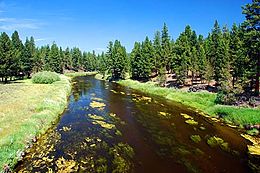
Archaeplastida

The Archaeplastida (or kingdom Plantae sensu lato) are a major group of autotrophic eukaryotes, comprising the red algae (Rhodophyta), the green algae, and the land plants, together with a small group of freshwater unicellular algae called glaucophytes. Unlike red and green algae, glaucophytes have never been involved in secondary endosymbiosis events. All of these organisms have chloroplasts that are surrounded by two membranes, suggesting that they were acquired directly from endosymbiotic cyanobacteria. In all other groups besides the amoeboid Paulinella chromatophora, the chloroplasts are surrounded by three or four membranes, suggesting they were acquired secondarily from red or green algae. The cells of the Archaeplastida typically lack centrioles and have mitochondria with flat cristae. They usually have a cell wall including cellulose, and food is stored in the form of starch. However, these characteristics are also shared with other eukaryotes. The main evidence that the Archaeplastida form a monophyletic group comes from genetic studies, which indicate their plastids probably had a single origin. This evidence is disputed. Based on the evidence to date, it is not possible to confirm or refute alternative evolutionary scenarios to a single primary endosymbiosis. Photosynthetic organisms with plastids of different origin (such as brown algae) do not belong to the Archaeplastida. The archaeplastidans fall into two main evolutionary lines. The red algae are pigmented with chlorophyll a and phycobiliproteins, like most cyanobacteria, and accumulate starch outside the chloroplasts. The green algae and land plants – together known as Viridiplantae (Latin for 'green plants') or Chloroplastida – are pigmented with chlorophylls a and b, but lack phycobiliproteins, and starch is accumulated inside the chloroplasts. The glaucophytes have typical cyanobacterial pigments, and are unusual in retaining a cell wall within their plastids (called cyanelles). Archaeplastida should not be confused with the older and obsolete name Archiplastideae, which refers to cyanobacteria and other groups of bacteria. The consensus in 2005, when the group consisting of the glaucophytes and red and green algae and land plants was named 'Archaeplastida', was that it was a clade, i.e. was monophyletic. Many studies published since then have provided evidence in agreement. Other studies, though, have suggested that the group is paraphyletic. To date, the situation appears unresolved, but a strong signal for Plantae (Archaeplastida) monophyly has been demonstrated in a recent study (with an enrichment of red algal genes). The assumption made here is that Archaeplastida is a valid clade. Various names have been given to the group. Some authors have simply referred to the group as plants or Plantae. However, the name Plantae is ambiguous, since it has also been applied to less inclusive clades, such as Viridiplantae and embryophytes. To distinguish, the larger group is sometimes known as Plantae sensu lato ('plants in the broad sense'). To avoid ambiguity, other names have been proposed. Primoplantae, which appeared in 2004, seems to be the first new name suggested for this group. Another name applied to this node is Plastida, defined as the clade sharing 'plastids of primary (direct prokaryote) origin in Magnolia virginiana Linnaeus 1753'. Although many studies have suggested the Archaeplastida form a monophyletic group, a 2009 paper argues that they are in fact paraphyletic. The enrichment of novel red algal genes in a recent study demonstrates a strong signal for Plantae (Archaeplastida) monophyly and an equally strong signal of gene sharing history between the red/green algae and other lineages. This study provides insight on how rich mesophilic red algal gene data are crucial for testing controversial issues in eukaryote evolution and for understanding the complex patterns of gene inheritance in protists.
